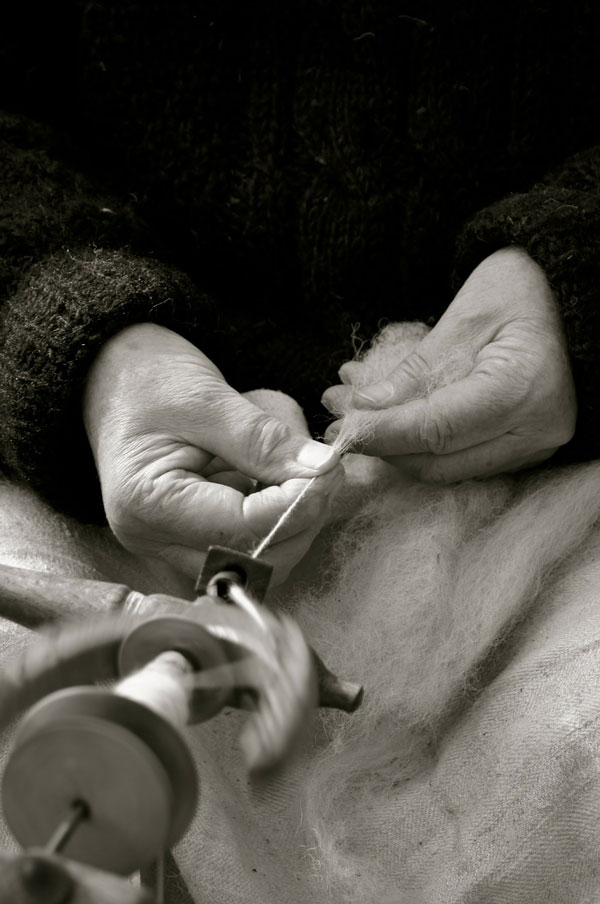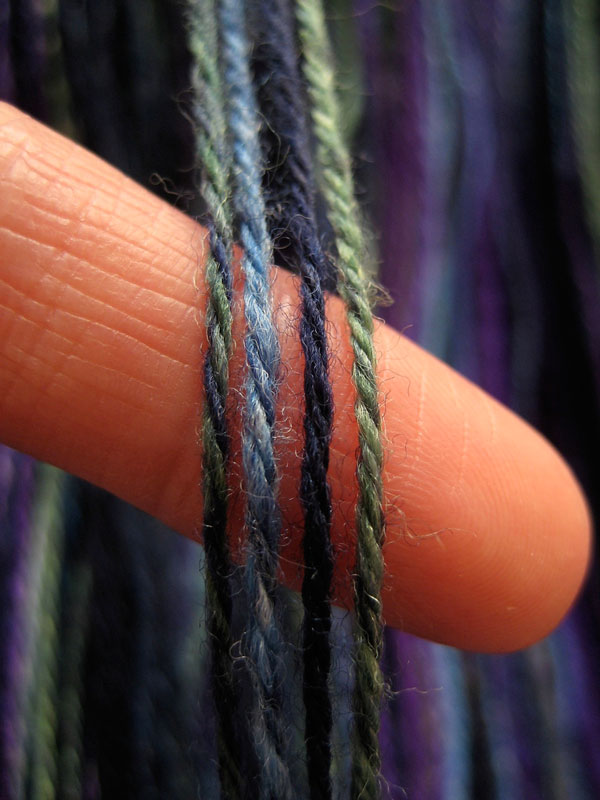Most spinning wheels are equipped with the capability for different speeds, expressed as ratios. These usually take the form of different sizes of whorls on your bobbin or flyer. Knowing how to use the ratios available to you can make a big difference in your spinning speed, as well as helping you get the thickness you would like.

What are spinning wheel ratios?
If you have a new wheel, the ratios available to you should be included in the documentation. If you don’t know what the ratios on your wheel are, use the method below to figure it out.
Ratios are expressed as a pair of numbers, such as 5:1 and 10:1. This means that for every 1 revolution of the large drive wheel, the flyer or bobbin turns 5 or 10 times, respectively. The higher the first number is, the more revolutions the flyer takes for each turn of the drive wheel. Different ratios are usually achieved through different sized whorls on the bobbin or flyer. The largest whorls are the slowest, turning the flyer fewer than 10 times per revolution of the drive wheel. The smallest whorls are the fastest, with ratios up to 20:1 or higher.
How to determine your spinning wheel ratios
If you want to figure out what the ratios are on your wheel, try this simple method: Tie a piece of bright yarn to one arm of your flyer and hold the flyer level. Turn the drive wheel so the crank is pointing straight up (12 o’clock). Then slowly turn the drive wheel once with your hand, counting the number of times the marked arm on the flyer turns — note that partial revolutions count too! This number is your ratio. Repeat for each whorl on your wheel.
Ratios and twist
So what impact do the various ratios actually have on your spinning? The upshot is, the smaller the whorl, the higher the ratio, the faster twist travels into your yarn. As you treadle, the flyer spins quickly, sending twist into your drafting zone and turning it into yarn. To achieve the same amount of twist on a slower ratio (larger whorl), you would have to treadle more times and/or faster before allowing the section to wind onto the bobbin. Note that faster isn’t always better, though!

Photo via Schacht Spindle Co.
When should I use a higher ratio?
If you want to make a thinner, high-twist yarn, use a higher ratio (smaller whorl). This includes firm sock yarns and lace-weight yarn. Many spinning wheel manufacturers have high speed flyers with even smaller whorls for maximum twist and speed. These are usually marketed as “lace” flyers.
In general, thinner yarns need more twist to hold them together. Some fibers need more twist to hold them together than others. Silk and slippery fibers that lack wool’s “grabby” cuticle need more twist so that they don’t slide apart under tension. Shorter-stapled fibers such as cotton also need a lot of twist. Since you want lots of twist to go into your fibers quickly, use a higher ratio (smaller whorl) for these types of fibers.
When should I use a lower ratio?
Use a lower ratio and larger whorl if you want a thicker yarn with a little less twist, such as soft singles. Bulkier yarns generally require less twist to hold together, and less twist helps achieve a soft hand in the finished yarn. A lower ratio is also great for when you’re learning to spin, trying out a new fiber, or just want to take things a little slower.

Photo via Laura Chau
Plying ratios
When doing a basic two-ply, I usually just ply on the same whorl that I’ve spun the singles with. The ratio you use for plying will depend on what kind of effect you’re looking for in your finished yarn. You can use a larger whorl for softer singles that you then ply together tightly with a smaller whorl, or vice versa. Try out some different combinations and see what you get!
Learn to spin on Craftsy!
Browse our growing selection of online spinning classes today!

Share tips, start a discussion or ask one of our experts or other students a question.
No Responses to “What Are Spinning Wheel Ratios?”